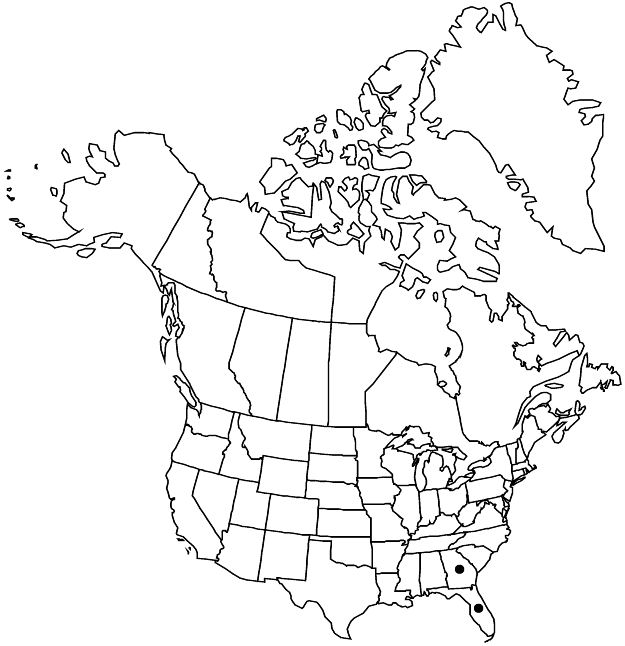Triumfetta semitriloba
Enum. Syst. Pl., 22. 1760.
Subshrubs. Stems erect, branched, 3–17 dm, stellate-pubescent, sometimes with simple hairs intermixed. Leaves: petiole 0.5–6 (–9) cm; proximal blades broadly ovate to rhombic-ovate, sometimes obscurely 3-lobed, 3–8 cm, distal usually oblong, base rounded, rarely shallowly cordate, margins irregularly serrate-dentate, apex acuminate, surfaces: abaxial (veins and lamina) densely and uniformly stellate-pubescent, 5–7-veined from base. Inflorescences 2–3 per axil, usually foliar-bracteate; peduncle 1–2 (–3) mm. Pedicels 2–3 mm. Flowers: sepals linear, subapically appendaged, 6 mm, stellate abaxially; stamens 15–25; ovaries 3 (–4) -locular. Capsules globose to slightly ovoid, 3–4 mm, surface glabrous or sparsely minutely hirtellous and sparsely and inconspicuously glandular with minute viscid hairs; spines uncinate, retrorsely barbed. 2n = 32.
Phenology: Flowering May–Dec.
Habitat: Hammocks and hammock margins, mulberry woodlands, thicket edges, disturbed sites, old groves
Distribution

Fla., Ga., Mexico, West Indies, Central America, South America, in Asia (Taiwan), w Pacific Islands (Hawaii), w Pacific Islands (Micronesia), w Pacific Islands (Philippines), Australia
Discussion
Triumfetta semitriloba is known from the southern counties of Florida, north to Manatee and Okeechobee counties, and in Georgia only from Baker and Camden counties.
Selected References
None.
Lower Taxa
"dm" is not declared as a valid unit of measurement for this property.